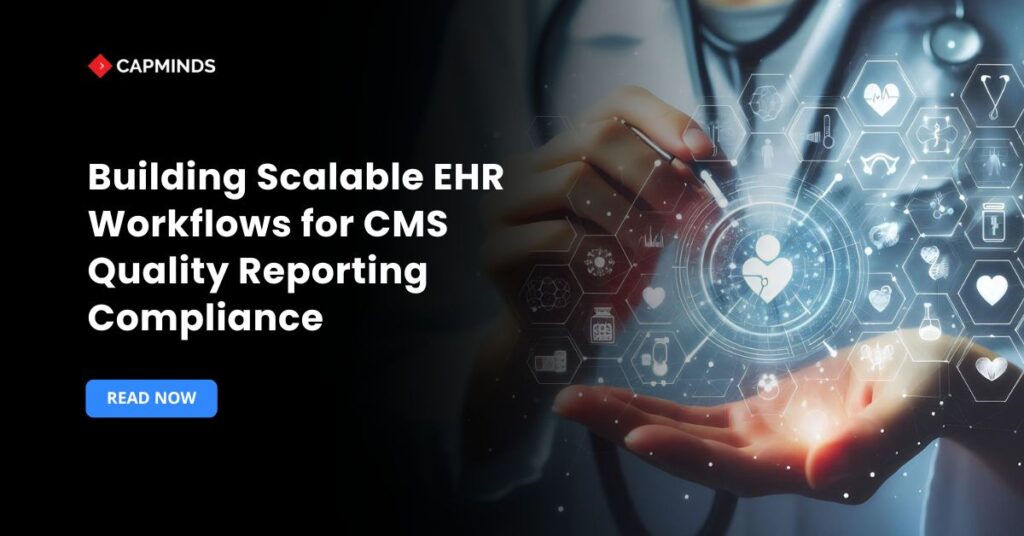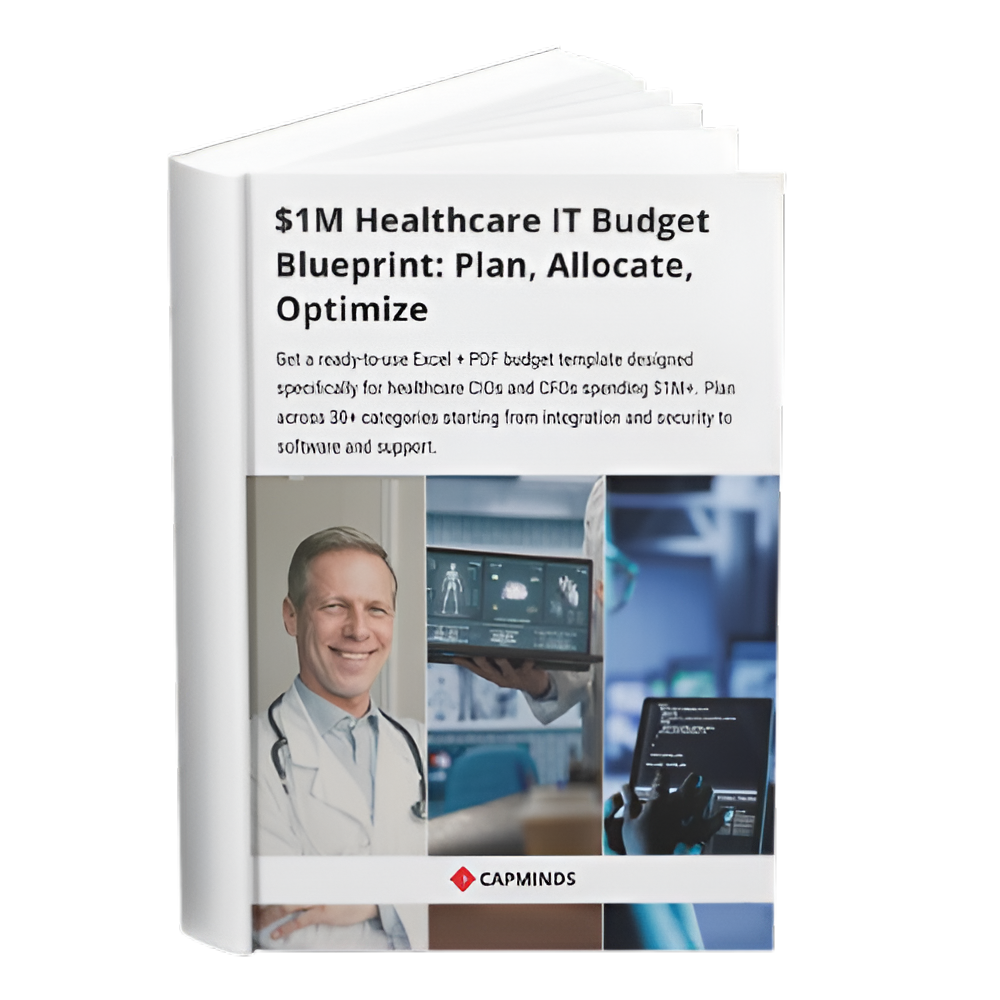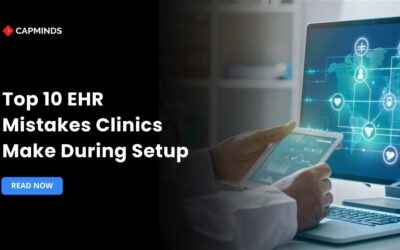Building Scalable EHR Workflows for CMS Quality Reporting Compliance
In the U.S. healthcare system, quality reporting is not just a bureaucratic exercise. It directly affects a provider’s financial health, care standards, and reputation. The Centers for Medicare & Medicaid Services, as the nation’s largest payer, ties reimbursement to quality performance through various programs.
Both cash incentives and penalties are used in quality programs to improve the quality of services. Value-based care models offer financial incentives to providers who score highly on reported quality metrics. Better patient care and safety are also directly supported by CMS quality reporting. Clinical outcomes and evidence-based practices are at the heart of the measures.
This encourages providers to monitor performance, fill gaps in care, and improve daily operations. Systemic improvements are fueled by regular reporting and benchmarking, which, over time, uncover best practices. Measurable improvements in patient outcomes are frequently the result of high compliance.
CMS posts quality ratings on websites. Throughout the healthcare system, this public reporting fosters accountability and openness. Hospitals and clinicians are aware that patients and payers can see their outcomes. This visibility safeguards the company’s standing in the marketplace and promotes ongoing quality improvement.
Challenges in CMS Quality Reporting via EHRs
There are many obstacles to overcome when integrating CMS quality reporting into electronic health record systems. The confluence of clinical workflows, data requirements, and technology constraints frequently presents challenges for healthcare companies. Important difficulties include:
1. Data capture and completeness
Quality measures demand accurate, structured data to compute numerators and denominators. If clinicians don’t enter data in the correct fields or format, the measure calculations may be incomplete. Many EHRs historically were designed for billing or documentation, not structured quality data capture, leading to missing or inconsistent data for reporting.
Variable documentation practices among providers exacerbate this. If each clinician documents a measure-related item differently, the EHR may not reliably pull all the data needed.
2. Standardization and measure mapping issues
Every CMS quality measure has a precise definition. Mapping the EHR’s data elements to these measure specifications can be complex. Many smaller practices lack informatics expertise to configure their EHR for each measure. In fact, small practices face additional burdens.
They may need to license extra EHR modules for quality reporting, and they often have limited IT support to do custom measure mapping. Without careful standardization, the EHR might not recognize that a quality action was performed, resulting in under-reporting.
3. Integrating multiple data sources
To offer full quality measures, hospitals and ACOs often need to aggregate data from many systems, including labs, pharmacies, inpatient and outpatient EHRs, etc.
This aggregation is challenging because these systems lack consistent data standards and interoperability.
- For example, an Accountable Care Organization may have to pull data from a dozen disparate EHR platforms.
- As one report noted, the central challenge is aggregating data from diverse EHRs and normalizing it to identify care gaps, given non-uniform documentation and legacy systems.
- Without robust interfaces and data normalization, quality reporting becomes a manual, error-prone task of reconciling information from siloed sources.
Related: Interoperability and Compliance: What It Takes to Pass CMS Audits
4. EHR system limitations
Not all EHRs support all CMS eMeasures out of the box. EHR vendors typically implement a subset of electronic clinical quality measures, and keeping them updated is a challenge.
Changes in measure specifications or new standards often lag in EHR software updates. It has been noted that it takes time to update EHR software for new measurements and that EHR manufacturers are unable to swiftly adjust to evolving CMS guidelines.
An organization’s EHR may not be ready in time if new reporting requirements are imposed, necessitating human data abstraction or workarounds. Scaling quality reporting when programs change is challenging due to this rigidity.
5. Workflow burden and user adoption
Fitting high-quality data gathering into healthcare workflows without adding undue strain is arguably the most difficult task. Additional clicks or forms to meet quality standards can cause alert fatigue and dissatisfaction for providers who are already overly busy.
- Early promises that EHR-based reporting would reduce manual effort haven’t fully materialized.
- Many hospitals acknowledge that the anticipated reduction in reporting workload has not been achieved by automated eCQM reporting.
- It frequently transfers the burden elsewhere rather than lessening effort.
Employees encounter difficulties when workflows are poorly structured. They might not document anything at all, or they might document things after the event. This results in data that is unreliable or incomplete.
Alignment is the main problem.
- While reporting systems require timely and structured data, clinical teams concentrate on providing patient care. It’s not easy to bridge these two needs.
- It takes careful planning, staff training, and continuous monitoring to include reporting into routine clinical workflows. It requires training and change management.
Clinicians may view certain disciplines as merely another bureaucratic task, but they must comprehend why they are necessary and how they improve treatment. Even the best technical solution will fail in the absence of significant buy-in.
These difficulties highlight the necessity of a planned approach. To get beyond the obstacles and create a workflow that is both scalable and compliant, both technical solutions and process enhancements are necessary.
Best Practices for Building Scalable, Compliant EHR Workflows
Healthcare businesses should adopt a holistic strategy that combines efficient teamwork, process governance, and intelligent technology configuration to meet CMS quality reporting requirements at scale.
Five essential tactics and best practices for developing EHR processes that can effectively manage quality reporting and adjust to change are listed below:
1. Standardize and Structure Data Capture
Scalable quality reporting begins with high-quality data. All relevant patient data must be captured in structured, standardized formats so it can be automatically pulled into quality measures.
Free-text notes or non-coded entries can be invisible to reporting algorithms. Ensure your EHR uses templates, dropdowns, and coded fields for measure-related documentation.
- For example, use predefined order sets and forms for preventive screenings or diabetes management that map to CMS measure criteria.
- Adopting standard code systems for documentation is critical so that data can be consistently recognized and aggregated.
- It’s wise to map local EHR fields to the exact data elements each quality measure requires, essentially creating a data dictionary for each measure.
This mapping makes sure that, for example, a lab value from the lab module or a blood pressure reading recorded in the vitals section feeds into the hypertension control measure numerator in the right way.
Organizations create a solid basis for precise and repeatable reporting at scale by prioritizing data standardization and strict data entry procedures.
2. Embed Quality Metrics into Clinical Workflows
Compliance should not be an afterthought or a separate “audit” task. It needs to be woven into everyday care delivery. Leading organizations design EHR workflows such that quality data capture happens naturally during patient care. This can be achieved through clinical decision support and smart prompts.
For instance, configure the EHR to prompt clinicians in real time if a required data point is missing. Use point-of-care reminders and checklists tied to quality measures, so that as clinicians chart, they also fulfill reporting requirements.
The goal is to make “the right thing to do” also “the easy thing to do” within the system. By aligning the EHR interface and workflow with measure requirements, data collection becomes a byproduct of care rather than a burdensome extra step.
Related: The Ultimate Checklist for Quality Measure Compliance in Your EHR
3. Automate Reporting and Leverage Analytics
A scalable workflow takes advantage of the EHR’s computing power to reduce manual work. The secret is automation. In real-time or almost real-time, your EHR or reporting system should automatically compile data and determine performance on each quality metric.
Invest in integrated dashboards and reporting solutions rather than rushing to grab graphics at the end of the quarter. Modern EHR platforms or add-on analytics solutions can display current performance on each CMS measure, with the ability to drill down to patient lists.
This lets quality managers and clinicians proactively monitor where they stand relative to targets. Automated reminders or worklists can then be generated for care coordinators to close those gaps.
Moreover, use analytics to identify patterns and outliers:
- Which providers or locations are excelling or lagging on certain metrics?
- What workflows are contributing to better outcomes?
One ACO that aggregated multi-EHR data was able to continuously analyze quality across all providers to “measure practice performance, fine-tune documentation for each measure, streamline the reporting process, and improve care quality”.
Simple data export in CMS-required formats must be supported by an EHR. This feature minimizes manual labor and expedites the submission process.
The load is further reduced by automated data extraction and validation. By reducing human mistakes, these tools free up staff members’ time to concentrate on patient care.
Another level of value is added by real-time analytics and reporting. They offer a feedback loop that transforms unprocessed data into insightful knowledge. Organizations may address deficiencies and enhance quality controls far in advance of official submission dates thanks to this visibility.
4. Align Clinical and IT Teams with Governance and Training
It takes people and process just as much as technology to create a sustainable, high-quality workflow. In order to create and manage the reporting workflow, it is imperative that clinical, technical, and administrative parties collaborate. Create a multidisciplinary working group or quality committee with compliance officers, EHR analysts, clinicians, and quality improvement experts.
This team can set roles and duties for quality data management, decide on documentation methods, and troubleshoot issues.
Strong data governance is needed to maintain data integrity:
- Establish policies for how data is entered
- Who validates its accuracy, and how changes (like a new measure or an EHR update) are implemented and tested.
- Regular meetings to review performance measures and discuss workflow pain points help keep everyone on the same page.
Invest in comprehensive training and ongoing support for end-users. Even the best EHR configuration will falter if staff are not confident in using it. Tailor training programs to each user role. Clinicians should learn how to document for quality measures, while IT staff learn how to update measure logic, for example.
5. Embrace Continuous Improvement and Future-Proofing
Your EHR workflows must be scalable in order to satisfy the reporting requirements of the modern world. They ought to adjust to future expansion and changing needs.
CMS quality initiatives are always evolving. Every year, specifications are updated. There are new measures. The priorities of policy change. Providers need to get ready for this continuous change.
- Building flexibility into an EHR workflow from the beginning is the greatest approach to future-proofing it.
- Updates can be made without replacing the complete system because of modular components.
- Connecting to external systems and adding new data kinds are made simpler by interoperable data standards.
- Keeping certifications and software versions up to date also lowers the risk of noncompliance.
Regular audits are essential. To identify reporting gaps or bottlenecks, conduct evaluations at least once every three months. Verify that the data that was recorded corresponds to the information displayed in the charts. Missed entries or declines in performance on particular metrics can be identified by automated alerts, allowing problems to be fixed before they become more serious.
Another level of improvement is added by benchmarking. Finding your strengths and opportunities for improvement can be accomplished by comparing your performance to that of peers at the regional or industry level. Transparency like this pushes businesses to achieve best-in-class outcomes.
Lastly, policy awareness cannot be compromised. Programs like Hospital Inpatient or Outpatient Quality Reporting and the Quality Payment Program are regularly updated by CMS. Reviewing yearly rule proposals and policy revisions should become routine in order to keep your company compliant and adaptable.
CapMinds EHR Workflow Optimization Services
Building scalable and compliant EHR workflows is no longer optional. It’s a necessity for healthcare providers aiming to meet CMS quality reporting requirements.
At CapMinds, we deliver end-to-end digital health tech services that ensure your EHR workflows are streamlined, compliant, and future-ready.
Our EHR Workflow Optimization Services empower hospitals, clinics, and health systems to align clinical and IT processes while reducing reporting burdens.
With our solutions, your organization can achieve accurate reporting, improved compliance, and enhanced patient outcomes. Our services include:
- EHR Workflow Optimization – Streamline data capture, mapping, and automation.
- CMS Quality Reporting Support – Ensure accurate, structured, and compliant submissions.
- Clinical Data Integration – Connect labs, pharmacies, and multi-site EHR systems seamlessly.
- Custom EHR Enhancements – Embed real-time analytics, dashboards, and automation tools.
- Training & Governance – Equip teams with role-specific training and compliance oversight.
CapMinds is your trusted partner to overcome workflow challenges and drive measurable improvements in quality reporting.
Contact us today to optimize your EHR workflows and scale with confidence.




